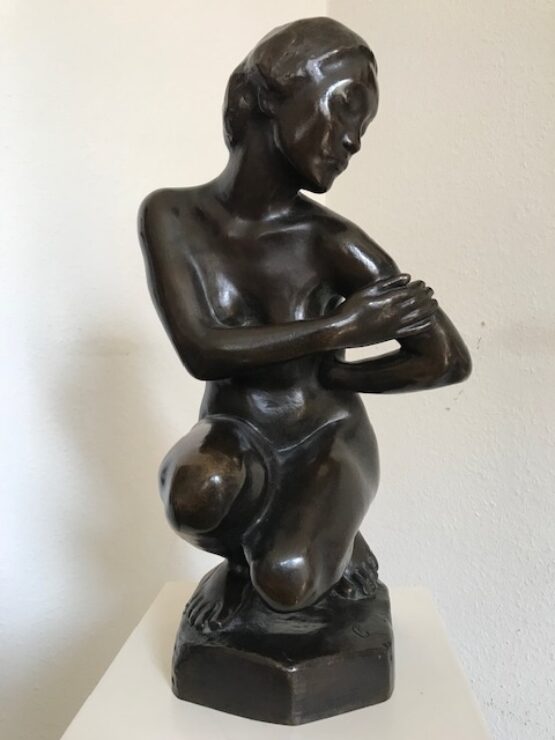
Galerie Thomas
Tuerkenstrasse 16
80333 Munich
Germany
Opening hours
Monday – Friday: 9am – 6pm
Saturday: 11am – 5pm
Georg Kolbe's "Japanese Woman" combines the motifs of the crouching nude and the depiction of Asian women, which were very fashionable at the time. Many artists took the Japanese dancers, popular at the time, as a pictorial theme, such as Max Slevogt or Pablo Picasso. Georg Kolbe joined this enthusiasm with his sculpture and at the same time established a new conception of the figure in his work. Emil Waldmann already emphasized the sculpture in his early text on Kolbe in 1916: "The Japanese Woman is a work of the highest charm and finest feeling, chaste in feeling and intimate in its quiet movements. One of those works in which something new suddenly bursts upon an artist, where his eyes suddenly open and his work regains something of the enthusiasm of a springtime experienced with full consciousness."
The "Japanese Woman" by Georg Kolbe has an eventful history since it came into the collection of a Dresden art patron at an early age - because it is a lifetime cast. The latter was the great-grandfather of the present owner and very active both for his private collection and as a consultant and supporter for museums in Germany and France. His own collection included mainly paintings by German and French Impressionists, but also sculptures by Georg Kolbe and Auguste Rodin. The son-in-law and heir of the Dresden patron and first owner of the "Japanese Woman", thus the grandfather of the present owner, fled from Dresden to Bremen before the Red Army and had to leave behind numerous works of art from the family collection. Among them were works previously lent to the Dresden museums, such as the "Japanese Woman" by Georg Kolbe. After the war, the sculpture was on loan for a long time to the Museum of Fine Arts in Leipzig. In 2010, the sculpture was restituted by the Leipzig Museum to its rightful owner, who is the father of the current owner, through inheritance. From its creation to the present day, Kolbe's sculpture has stayed in the family through four generations and has not been lost despite the circumstances and turmoil of the war and post-war period.